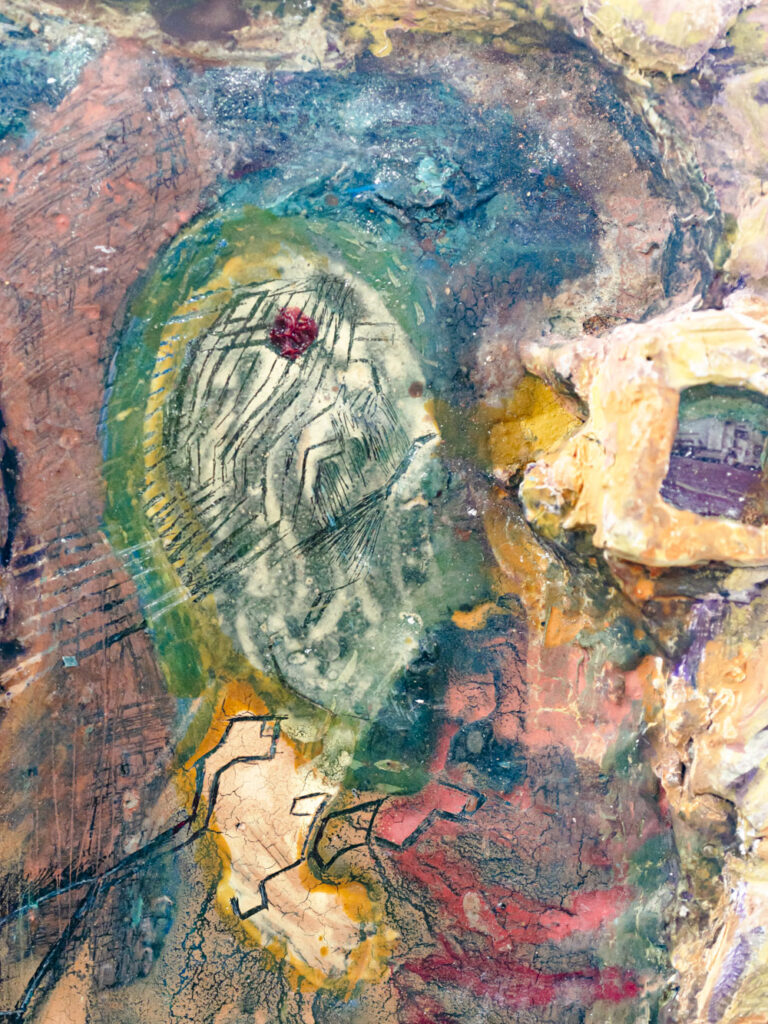Side A .
A reference to a sense of haulage. This in a developed economy usually is through heavy equipment or vehicles such as semi trailer trucks, trains or ships. This work is part of a series with a reference to modernisation theory.
References within the depiction
The edges apart from the relief carvings in air dry clay have photographic prints. These prints reference modern vehicles for haulage. There are two visible images on the top left and right with the third at the bottom being obscured through the chiselling of the resin block.
The marble block (practice developed from 2006) and lino cut appear on the bottom central section depicting older from of haulage as of a non descriptive pack animal. The size in relation to the small prints suggests the historical significance of the beast of burden paradigm.
A Material technique used in Haulage.
There are minor colour fields created through washes that are poured and then scratching off in part. The wash is applied to a surface of resin so as to reveal under layers once scratching off is complete.
Side B of Haulage four sided construction.
This side although abstract has conceptual associations with my earlier artworks through themes pertaining modernisation and the environment, chemical interactivity for consumption, and modes of cultural flows as soft power.
Side view with prints
The side view are in themselves complete the perspectives of the previous two sides by token of giving semantic content through a series of photographic prints. The first series of prints depicts rural haulage on the Indian sub continent. The alternate narrow side view is contrasted to similar activities relating to the sugar industry but in a Australian context with train haulage of the cane and large sugar mills.
